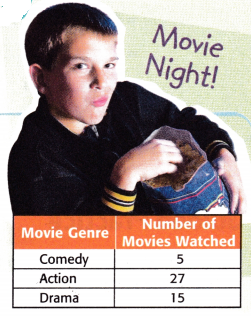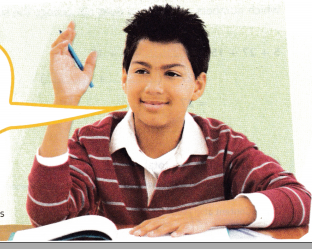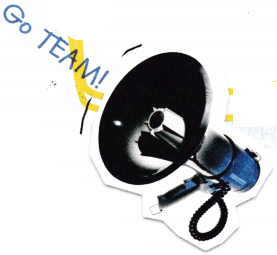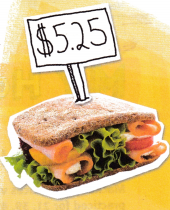All the solutions provided in McGraw Hill My Math Grade 5 Answer Key PDF Chapter 5 Lesson 7 Addition Properties will give you a clear idea of the concepts.
McGraw-Hill My Math Grade 5 Answer Key Chapter 5 Lesson 7 Addition Properties
You can use properties of addition to find sums of whole numbers and decimals mentally. When there are no parentheses, add in order from left to right.
Math in My World
Example 1
Elijah recorded the number of different movies he watched last month. Use properties of addition to mentally find the total number of movies.

Find 5 + 27 + 15.
You can easily add 5 and 15. So, change the order and group those numbers together.
The Commutative Property of Addition states that the order in which numbers are added does not change the sum.
The Associative Property of Addition states that the way in which numbers are grouped does not change the sum.
5 + 27 + 15 = __________ + 5 + 15 Commutative Property
= 27 + (___________ + ___________) Associative Property
= 27 + ____________ Add mentally. 5 + 15 = ____________
= __________ Add mentally. 20 + 27 = _____________
So, Elijah watched a total of ____________ movies.
Answer:
Elijah watched a total of 47 movies.
Explanation:
The Associative Property of Addition states that the way in which numbers are grouped does not change the sum.
5 + 27 + 15 = 27 + 5 + 15 Commutative Property
= 27 + (5 + 15) Associative Property
= 27 + 20 Add mentally. 5 + 15 = 20
= Add mentally. 20 + 27 = 47
So, Elijah watched a total of 47 movies.
Example 2
Use properties to find 1.8 + 2.6 + 0 mentally.
1.8 + 2.6 + 0 = (____________ + 0.8) + (____________ + 0.6) + 0
= 1 + ____________ + 0.8 + ____________ + 0 Commutative Property
= (1 + ____________) + (0.8 + ____________) + 0 Associative Property
= ____________ + ____________ + 0 Add.
= ____________ + 0 Identity Property
= ____________ Add.
Answer:
4.4
Explanation:
Use properties to find 1.8 + 2.6 + 0 mentally.
1.8 + 2.6 + 0 = (1 + 0.8) + (2 + 0.6) + 0
= 1 + 2 + 0.8 + 0.6 + 0 Commutative Property
= (1 + 2) + (0.8 + 0.6) + 0 Associative Property
= 3 + 1.4 + 0 Add.
= 4.4 + 0 Identity Property
= 4.4 Add.
Hence the answer is 4.4.
Guided Practice
Question 1.
Use properties of addition to find each sum mentally. Show your steps and identify the properties that you used.
9 + 27 + 1 = ____________ + 9 + 1 Commutative Property
= 27 + (____________ + ____________) Associative Property
= 27 + ____________ Add.
= ____________ Add.
Answer:
37
Explanation:
Given,
9 + 27 + 1 = ____________ + 9 + 1 Commutative Property
9 + 27 + 1 = 27 + 9 + 1 Commutative Property
= 27 + (9 + 1) Associative Property
= 27 + 10 Add.
= 37 Add.
Hence the answer is 37.
Talk Math
Use properties to mentally determine whether 3.1 + 0.8 + 0.9 is less than, greater than, or equal to 5. Explain.

Answer:
The answer is less than 5.
Explanation:
Given,
3.1 + 0.8 + 0.9
We have to find the given question is less than, greater than, or equal to 5.
First, add the given numbers
3.1 + 0.8 + 0.9 = 4.8
Therefore the number 4.8 is less than 5.
4.8 < 5.
Independent Practice
Identify the properties that are used to find each sum.
Question 2.
69 + 22 = (60 + 9) + (20 + 2)
= 60 + 20 + 9 + 2 _________________
= (60 + 20) + (9 + 2) _________________
= 80 + 11 Add.
= 91 Add.
Answer:
Commutative Property and Associative Property are used to find the sum.
Explanation:
69 + 22 = (60 + 9) + (20 + 2)
= 60 + 20 + 9 + 2 Commutative Property
= (60 + 20) + (9 + 2) Associative Property
= 80 + 11 Add.
= 91 Add.
Question 3.
1 1 + 7.7 + 4.3 + 0 = 11 + (7.7 + 4.3) + 0 _________________
= 11 +12 + 0 Add.
= 23 + 0 _________________
= 23 Add.
Answer:
Commutative Property and Identity Property are used to find the sum.
Explanation:
1 1 + 7.7 + 4.3 + 0 = 11 + (7.7 + 4.3) + 0 Commutative Property
= 11 +12 + 0 Add.
= 23 + 0 Identity Property.
= 23 Add.
Question 4.
37 + 26 + 53 = 26 + 37 + 53 _________________
= 26 + (37 + 53) _________________
= 26 + 90 Add.
= 116 Add.
Answer:
Commutative Property and Associative Property.
Explanation:
37 + 26 + 53 = 26 + 37 + 53 Commutative Property
= 26 + (37 + 53) Associative Property.
= 26 + 90 Add.
= 116 Add.
Question 5.
Use properties of addition to find the sum mentally. Show your steps and identify the properties that you used.
10.9 + 3 + 0.1 = _________________
Answer:
14
Explanation:
10.9 + 3 + 0.1
10 + 0.9 + 3 + 0.1 Commutative Property
(10 + 3) + (0.9 + 0.1) Associative Property.
13 + 1 Add
14 is the sum.
Problem Solving
Question 6.
Mathematical PRACTICE Use Number Sense Casey spent $2.50 on a snack, $1.24 on gum, $3.76 on a comic book, and $5.50 on lunch. Use mental math to find the total amount that he spent.
Answer:
$13.00
Explanation:
Given,
Casey spent on a snack $2.50.
Gum = $1.24
comic book = $3.76
Lunch = $5.50
Total = $2.50 + $1.24 + $3.76 + $5.50
= $13.00
Question 7.
In one week, a classroom collected 43, 58, 62, 57, and 42 cans. Find the total number of cans the classroom collected using mental math. Explain how you found the sum.
Answer:
The sum is 262.
Explanation:
Given,
No of cans a classroom collected = 43, 58, 62, 57, and 42
Total number of cans the classroom collected = 43 + 58 + 62 + 57 + 42 = 262
Question 8.
The table shows the cost of a cheerleading uniform. Use properties of addition to find the total cost of the uniform mentally.


Answer:
$118.
Explanation:
Given,
The cost of a cheerleading uniform $65, $18 and $35.
Total cost = $65 + $18 + $35
Let us use the properties of addition to find the sum.
$65 + $18 + $35
60 + 5 + 10 + 8 + 30 + 5 is Commutative Property
(60 + 10 + 30) + (5 + 8 + 5) is Associative Property
100 + 18 Add
118 is the sum.
HOT Problems
Question 9.
Mathematical PRACTICE Model Math Write a real-world problem that can be solved using the Associative Property of Addition. Solve the problem. Explain how you found the sum.
Answer:
Let us understand the real-world problem with an example: Suppose we go to the supermarket and sandwich for 15 dollars, Biscuits for 10 dollars, and milk for 15 dollars. When we add the total in the head, we can add the price of the sandwich and the Biscuits first and add the result to the price of the milk.
15 + 10 + 15 = 40
Question 10.
Building on the Essential Question How can properties help me add whole numbers and decimals?
Answer:
We can use the properties of addition to add integers, fractions, or decimals.
For example, the commutative property of addition helps us to understand that changing the order of the addends doesn’t change the total sum.
McGraw Hill My Math Grade 5 Chapter 5 Lesson 7 My Homework Answer Key
Practice
Use properties of addition to find each sum mentally. Show your steps and identify the properties that you used.
Question 1.
9 + 6 + 31 = _______________
Answer:
46
Explanation:
Given,
9 + 6 + 31
6 + 9 + 31 is Commutative Property
6 + (9 + 31) is Associative Property
6 + 40 Add
46 Add
Question 2.
12.5 + 0 + 1 + 43.5 = _______________
Answer:
57
Explanation:
Given,
12.5 + 0 + 1 + 43.5
1 + 12.5 + 43.5 + 0 Commutative Property
1 + (12.5 + 43.5) + 0 Associative Property
1 + 56 + 0 Identity Property
57 Add
Problem Solving
Question 3.
Sasha spent $1.05 on a soda, $5.25 on a sandwich, $0.75 on a piece of fruit, and $4.95 on a magazine. Use mental math to find the total amount she spent.

Answer:
$12
Explanation:
Given,
Sasha spent $1.05 on a soda.
sandwich $5.25.
piece of fruit $0.75
magazine $4.95.
Total money spent = $1.05 + $5.25 + $0.75 + $495
= $12
Question 4.
Jessie went to the mall and bought a CD for $12.98, a skirt for $17.50, a T-shirt for $8.50, and a bottle of water for $1.02. Use mental math to find the total amount she spent.
Answer:
$40
Explanation:
Given,
CD bought = $12.98
Skirt = $17.50
T-shirt = $8.50
Bottle of water = $1.02
Total amount she spent = $12.98 + $17.50 + $8.50 + $1.02
= $40
Question 5.
Gary played soccer for 1 hour and tennis for 2 hours. Tanya played tennis for 2 hours and soccer for 1 hour. Who played sports longer? Explain.
Answer:
Both played for the same amount of time.
Explanation:
By using commutative property the order in which numbers are added does not change the actual sum.
Question 6.
Mathematical PRACTICE Use Math Tools Without calculating, would 0.4 + (2 + 0.6) be less than, greater than, or equal to 3? Explain.
Answer:
The sum is equal to 3.
Explanation:
Given,
0.4 + (2 + 0.6)
0.4 + 0.6 + 2
1 + 2 = 3
hence the sum is equal to 3.
Test Practice
Question 7.
Paula was reading a novel. She read 13 pages on Sunday, 12 pages on Tuesday, 17 pages on Friday, and 8 pages on Saturday. Use mental math to find the total number of pages she read.
(A) 40 pages
(B) 42 pages
(C) 50 pages
(D) 60 pages
Answer:
50 pages.
Explanation:
Given,
No of pages Paula read on Sunday = 13 pages
No of pages Paula read on Tuesday = 12 pages
No of pages Paula read on Friday = 17 pages
No of pages Paula read on Saturday = 8 pages
Total number of pages she read = 13 + 12 + 17 + 8 = 50 pages.